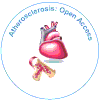Heart Attack: A Comprehensive Insight into Myocardial Infarction
Received Date: Mar 01, 2024 / Published Date: Mar 29, 2024
Abstract
Myocardial infarction, commonly known as a heart attack, is a life-threatening medical condition that results from the blockage of blood flow to the heart muscle. This article provides a comprehensive overview of myocardial infarction, encompassing its causes, risk factors, symptoms, diagnosis, treatment, and prevention. The primary cause of heart attacks is atherosclerosis, characterized by the accumulation of plaque in the coronary arteries, which can lead to the formation of blood clots and subsequent obstruction of blood flow. Numerous risk factors, including age, gender, family history, smoking, hypertension, high cholesterol, diabetes, obesity, and stress, contribute to the likelihood of experiencing a heart attack. Recognizing the symptoms of a heart attack, which may vary from person to person, is crucial for prompt intervention and improved outcomes. Diagnostic methods, such as electrocardiograms, blood tests, coronary angiography, echocardiography, and stress testing, aid in confirming the diagnosis. Immediate treatment options include medications, thrombolytic therapy, angioplasty with stenting, and coronary artery bypass grafting, depending on the severity of the condition. Preventing myocardial infarction involves adopting a heart-healthy lifestyle, including a balanced diet, regular exercise, smoking cessation, stress management, blood pressure and cholesterol control, and proper diabetes management. This article underscores the importance of timely intervention and a proactive approach to heart health, emphasizing the potential for improving long-term outcomes and reducing the risk of myocardial infarction. Consultation with healthcare professionals is encouraged for individualized guidance and care.
Citation: Helen J (2024) Heart Attack: A Comprehensive Insight into MyocardialInfarction. Atheroscler Open Access 9: 244. Doi: 10.4172/asoa.1000244
Copyright: © 2024 Helen J. This is an open-access article distributed under theterms of the Creative Commons Attribution License, which permits unrestricteduse, distribution, and reproduction in any medium, provided the original author andsource are credited.
Share This Article
Open Access Journals
Article Tools
Article Usage
- Total views: 569
- [From(publication date): 0-2024 - Mar 31, 2025]
- Breakdown by view type
- HTML page views: 386
- PDF downloads: 183
